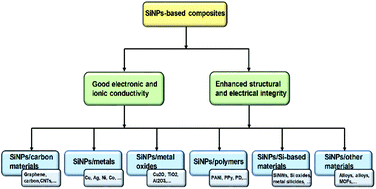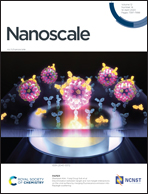Silicon-nanoparticle-based composites for advanced lithium-ion battery anodes
Abstract
Lithium-ion batteries (LIBs) play an important role in modern society. The low capacity of graphite cannot meet the demands of LIBs calling for high power and energy densities. Silicon (Si) is one of the most promising materials instead of graphite, because of its high theoretical capacity, low discharge voltage, low cost, etc. However, Si shows low conductivity of both ions and electrons and exhibits a severe volume change during cycles. Fabricating nano-sized Si and Si-based composites is an effective method to enhance the electrochemical performance of LIB anodes. Using a small size of Si nanoparticles (SiNPs) is likely to avoid the cracking of this material. One critical issue is to disclose different types and electrochemical effects of various coupled materials in the Si-based composites for anode fabrication and optimization. Hence, this paper reviews diverse SiNP-based composites for advanced LIBs from the perspective of composition and electrochemical effects. Almost all kinds of materials that have been coupled with SiNPs for LIB applications are summarized, along with their electrochemical influences on the composites. The integrated materials, including carbon materials, metals, metal oxides, polymers, Si-based materials, transition metal nitrides, carbides, dichalcogenides, alloys, and metal–organic frameworks (MOFs), are comprehensively presented.

- This article is part of the themed collection: Recent Review Articles


 Please wait while we load your content...
Please wait while we load your content...